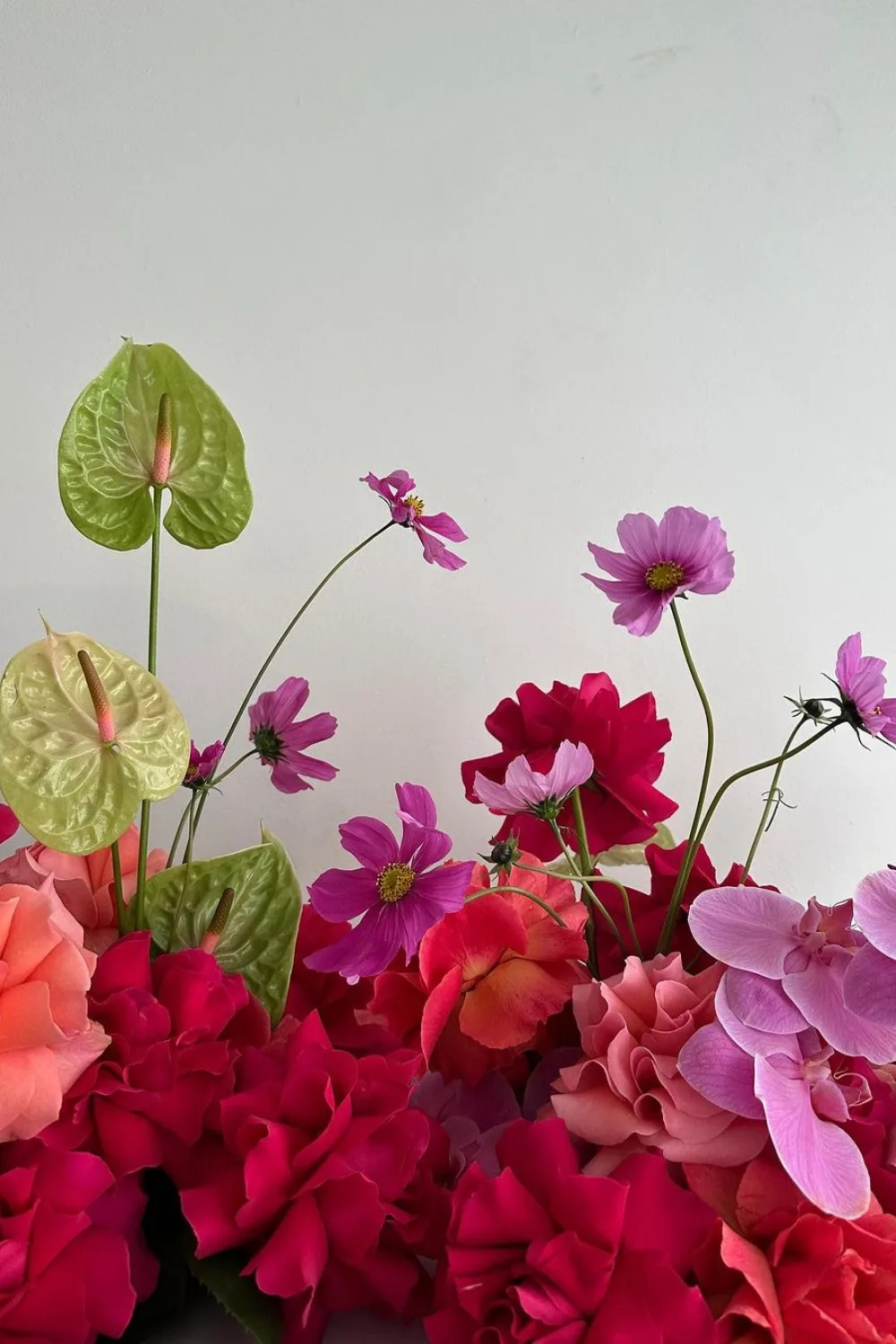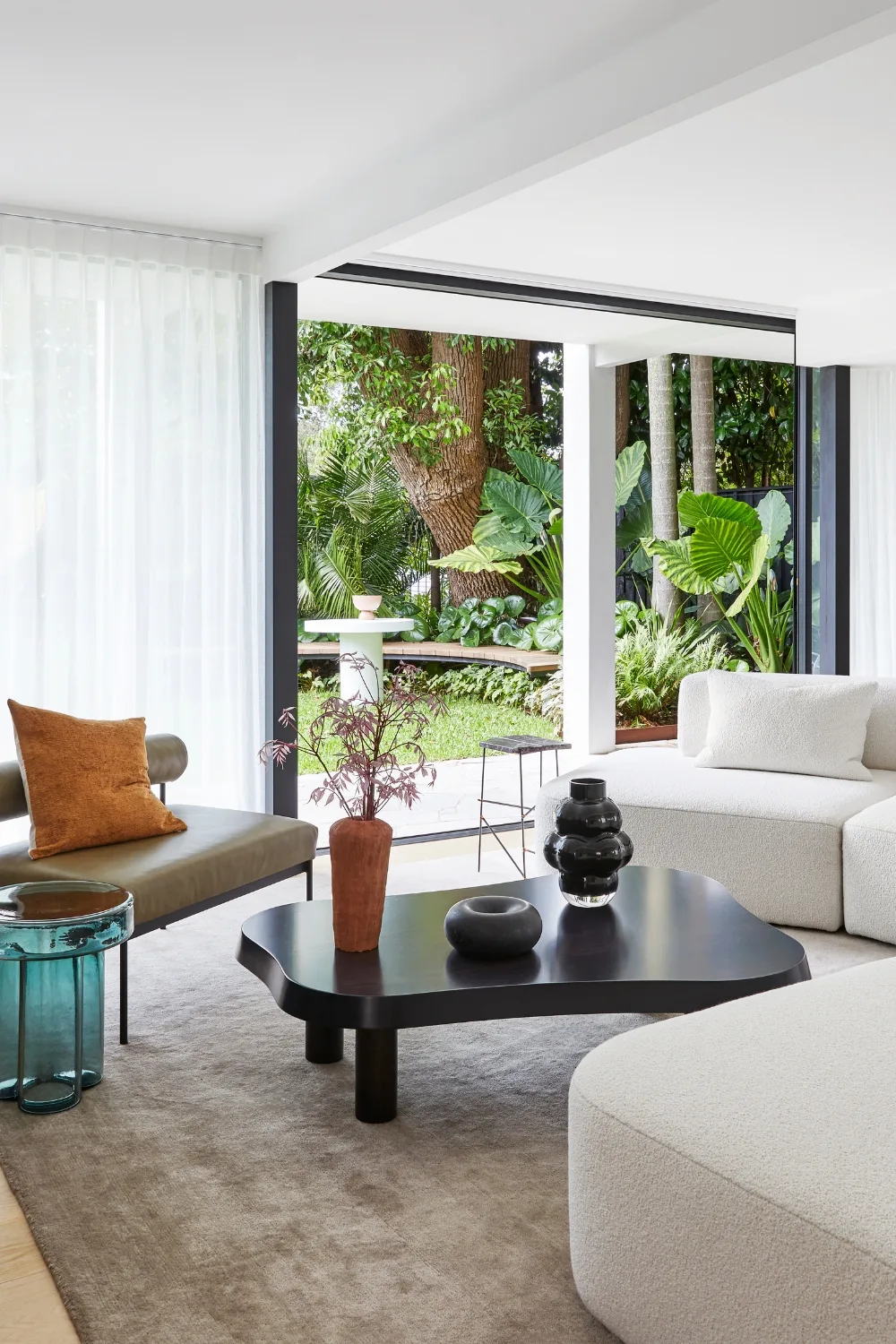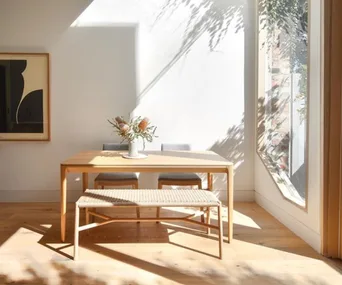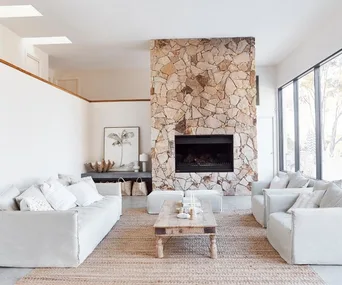“Wabi sabi is an acceptance and appreciation of the impermanent, imperfect, and incomplete nature of everything,” writes Japanologist Beth Kempton in her book, Wabi Sabi: Japanese Wisdom for a Perfectly Imperfect Life.
Pronounced ‘wah-bi sah-bi’, the concept originated thousands of years ago in Japanese tea ceremonies, which embrace natural and rustic materials, simplicity, and patience.
Now, the ancient philosophy also extends to interiors.
Wabi sabi design celebrates natural beauty and imperfection. There is no place for curated shelves, flawless décor, mass-produced furniture, or synthetic materials. Instead, think sentimental keepsakes, minimal styling, and a colour scheme inspired by nature.
Bring this soothing style into your own home with these wabi sabi inspired decorating tips.
1. Less is more
Take a minimalist and less-is-more approach to your interiors, stripping away all that is unnecessary. For essential items that create visual clutter, invest in beautiful or nifty storage solutions like rattan baskets or a sofa with hidden storage compartments.
“Wabi sabi teaches us to be content with less in a way that feels like more. Less stuff, more soul. Less hustle, more ease. Less chaos, more calm. Less mass consumption and more unique creation,” explains Kempton.

2. Create a natural colour palette
The easiest way to channel wabi sabi style? Create an understated, nature-inspired colour scheme. Ocean blue and forest green hues, and earthy shades like terracotta and oak, work in harmony to cultivate a sense of peace at home.
Start from the ground up with Choices Flooring’s Genero Grove vinyl planks. Inspired by Australian species and oaks, Genaro Grove is available in a range of colours like Tassie Oak, Bleached Driftwood, and Coastal Spotted Gum. The planks are also durable, easy to clean, and suitable for underfloor heating to keep you cosy underfoot.

3. Embrace biophilic design
Wabi sabi style is synonymous with biophilic design, which invites the natural world into the home. Bring the outside in with an abundance of sunlight (install a skylight if this is lacking in your living area), hand-picked foliage, and bouquets of flowers.
Florist Kowsh Rawson of Kiko Design says: “My ideal way of channelling wabi sabi through floral arrangements is through minimal and simplistic design. The arrangement needs to form an aesthetic that is harmonious and sensitive.”
“Keep it simple with the use of a single variety,” Kowsh advises. “Follow the lines and the shape of each individual stem, arranging thoughtfully and intentionally to ensure that each flower or branch has its own space and presence.”

4. Treasure handmade pieces
“Avoid the purchase of plastics or synthetic materials and opt for furnishing that features an artisanal factor. These don’t always have to be brand new or need to come with a hefty price tag,” Kowsh suggests.
If you need something new, trawl antique shops and second-hand markets, look for handcrafted ceramics, or hold onto personal pieces that tell a story. In the living room, you can frame handwritten cards from your loved ones, display treasures collected on your travels, or fill shelves with your favourite books.
“If you’re looking to slowly introduce wabi sabi into small practices, I love a handmade ceramic coffee cup — perfect for your early morning coffee ritual,” the florist says.

5. Repurpose and upcycle items
In the traditional Japanese art of Kintsugi, people repair broken objects with gold lacquer. This seals the cracks and makes the object more unique and appealing.
Apply this approach to your own home by repairing, repurposing, and upcycling time-worn or damaged items. Admire the patina on your leather lounge; appreciate the story behind the coffee ring stains on your side table; and embrace flaws.
Genero Grove is included in the ‘Easy Living’ sale with ten colours on sale now.



